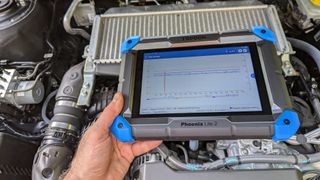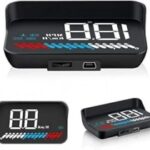A Good Quality Obd2 Scanner is an essential tool for any car owner, enabling you to diagnose car problems without needing a mechanic. These devices connect to your car’s onboard computer, providing access to vital information and troubleshooting codes. But with so many options available, finding the right one can be daunting. This guide explores what to look for in a good quality OBD2 scanner, reviews top models, and answers frequently asked questions.
Understanding OBD2 Scanners and Their Importance
OBD2 scanners act as a bridge between your car’s computer and you. They read Diagnostic Trouble Codes (DTCs) – error codes triggered when your car detects an issue. A good quality OBD2 scanner not only displays these codes but also provides descriptions, helping you understand the problem. More advanced scanners offer features like live data streaming, allowing you to monitor engine performance in real-time.
Key Features of a Good Quality OBD2 Scanner
Several factors contribute to a good quality OBD2 scanner:
- Accuracy: The scanner must accurately read and interpret DTCs. Inaccurate readings can lead to misdiagnosis and unnecessary repairs.
- Ease of Use: The interface should be intuitive, even for beginners. Clear navigation and easy-to-understand code descriptions are crucial.
- Compatibility: Ensure the scanner is compatible with your car’s make and model. Most modern vehicles use the OBD2 standard, but some older models may require specific adapters.
- Features: Basic scanners read and clear codes. Advanced models offer features like live data, smog check readiness, and ABS/SRS system diagnostics. Consider your needs and budget when choosing.
- Durability: A well-built scanner should withstand regular use and occasional drops. Look for rugged designs with protective casings.
- Software Updates: Cars constantly evolve. A good scanner should offer software updates to stay compatible with new vehicle models and diagnostic protocols.
Top-Rated Good Quality OBD2 Scanners
- Topdon TopScan: This wireless scanner excels in ease of setup and offers professional-level features like predictive diagnostics and repair instructions.
- Launch CR529: Budget-friendly yet powerful, the CR529 offers comprehensive diagnostics, lifetime support, and upgrades.
- Topdon Phoenix Lite 2: Designed for professionals and serious DIYers, this rugged scanner boasts a large touchscreen and advanced features.
- Ancel BD310: This dual-purpose scanner serves as both a diagnostic tool and a secondary car display, showing engine specs in real-time.
- Carly OBD-II Scanner: Known for its excellent companion app, Carly offers customization options and advanced diagnostics, but compatibility varies depending on the car model.
Choosing the Right OBD2 Scanner: Handheld vs. Wireless
- Handheld Scanners: These self-contained units have a built-in screen and connect directly to the OBD2 port. They are generally more expensive but offer a dedicated interface and don’t rely on external devices.
- Wireless Scanners: These connect to your smartphone or tablet via Bluetooth, using an app to display information. They are often more affordable and portable.
Deciphering Diagnostic Trouble Codes (DTCs)
Understanding DTCs is crucial for effective diagnosis. These codes follow a specific format: a letter (P, B, C, or U) indicating the system (Powertrain, Body, Chassis, or Undefined) followed by four numbers. A good quality OBD2 scanner will provide definitions for these codes.
Conclusion
Investing in a good quality OBD2 scanner empowers you to understand and address car issues, potentially saving you time and money on mechanic visits. Consider your needs, budget, and technical proficiency when choosing a scanner. Whether you’re a casual car owner or a dedicated DIYer, a reliable OBD2 scanner is an invaluable tool for maintaining your vehicle’s health.


